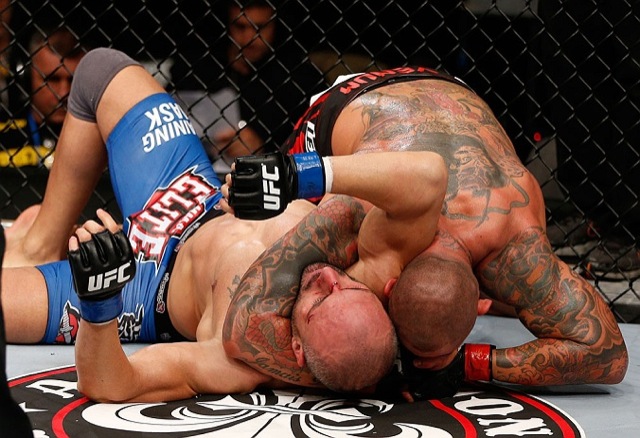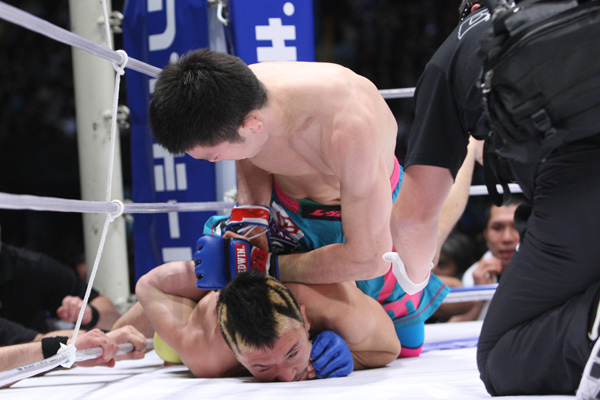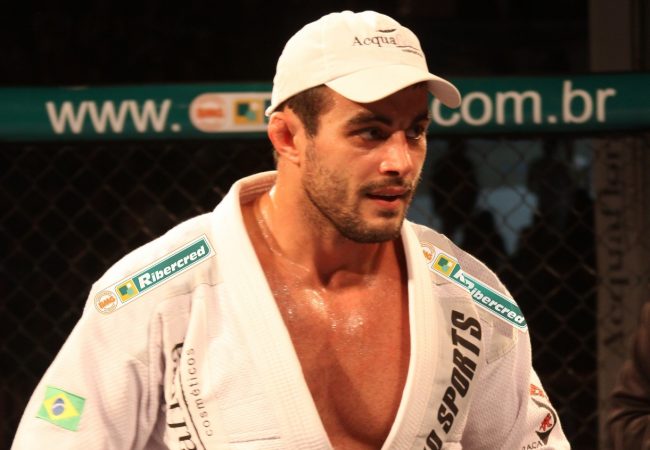
Claudio França surrounded my his master, Alvaro Mansur, and his students of all ages (publicity photo)
Before going on to fight at Dana White’s event, dozens of American and Brazilian Jiu-Jitsu fighters first gained fame at the tournaments of Claudio França, a black belt since 1990.
The Jiu-Jitsu professor living in Santa Cruz, California, played a part in such big names as BJ Penn, Nick and Nate Diaz and others coming to fame, thanks to the well-run US Open, a tournament made to serve upstart kids and burly veterans equally.
GRACIEMAG.com had a chat with the promoter, who has been producing events ever since 1987, to find out about his plans for the 2013 season in California. Check out what he had to say!
GRACIEMAG.com? You’ve been following Jiu-Jitsu’s growth in the United States for some time now. What kind of increase in the number of kids practicing Jiu-Jitsu are we seeing these days?
CLAUDIO FRANÇA: It’s impressive. When I arrived in the USA, in 1994, there weren’t any children practicing. Three or four kids would show up, less than 10% of the academy. Now more than 50% of my students comprise kids. At the American Cup, one of the tournaments I promote, there are around 400 kids each year.
GRACIEMAG.com: What are you planning next in terms of championships?
CLAUDIO FRANÇA: My next event is All Star, to be held at the Santa Cruz Civic Auditorium from Feb. 16 to 17. It’s the same venue where I used to hold the US Open. The cool part is that it was at this locale 16 years ago that I held the first US Open Jiu-Jitsu Championship, when Jiu-Jitsu was first sprouting up here. And the US Open was a success. At the first event, in 1996, there were 150 competitors. Now there are more than a thousand, and the venue was too small, so I had to move it. But the location is awesome; it’s the only big auditorium in the city. There’s already been a Bob Marley concert there, boxing and MMA events… When a famous musician comes to down, they usually play at the Civic Auditorium. The auditorium was built early last century but has undergone a series of improvements. The seats are comfortable, the architecture is pretty, there are dressing rooms—so it’s a pleasant venue in which to hold a Jiu-Jitsu championship. And it exudes tradition to boot.
How did the idea of All Star come about?
As I had to move my more popular tournaments—the US Open and the American Cup—to San Jose in search of a bigger gymnasium, the folks here in Santa Cruz, like shop and hotel owners, called me to lament the fact that there were no more tournaments in the city. They said that the economic impact the tournaments had was really good, that the city filled up and sales heated up. At the same time, the competitors complained about not having any more events in Santa Cruz, a small town everyone loves to visit. Spending a weekend in Santa Cruz is like spending a weekend in Búzios or Saquarema, to paint a picture for Brazilians to understand. There’s beach, waves, surfing.
And thus All Star came to be, in 2012.
That’s right. To support the community in Santa Cruz, I created All Star Brazilian Jiu-Jitsu last year in the town where my family and I live, where my first academy is located. What’s more, with each championship I promote, I donate 20% of sales to Harvest Food Bank, a cool NGO. They’re trying to put an end to hunger here in Santa Cruz. It’s a food bank, and people who are going through rough times, who lost their jobs and haven’t the means to buy food for their families, can go by there and get food for free.
Has All Star grown since 2012?
Yes, last year’s All Star was only for adults, but this year there’ll be kids in it too. We’ll also have female and male divisions. A day before the tournament, Feb. 15, we’ll have a rules seminar taught by IBJJF head referee Alvaro Mansur, a fifth-degree black belt,at my academy. He’ll explain the new rules of the sport and all the recent changes. All our referees will be there for it. All the participants will get an IBJJF certificate. And anyone signed up for All Star will get a 50% discount.
Will there be any favorites competing at All Star?
At black belt, we’ll have the debut of one of the most promising athletes from the new generation of Jiu-Jitsu here in the USA. His name is Nathan Mendelsohn. Nathan has been my student since he was 10 years old. I awarded him his black belt at the end of 2012, and he’s an excellent competitor. He’s very talented.
Have you always trained under Grandmaster Francisco Mansur?
I started training when I was a kid. My grandparents and mother took me. First I did judo, then I transferred to Grandmaster Francisco Mansur’s Kioto Jiu-Jitsu Academy. I’ve been training with him ever since. Now we’re kind of far apart, him being in New York, but he’s still my friend, teacher and mentor. He’s someone who I listen to in Jiu-Jitsu. Obviously, over all these years, a lot of people have helped me technically and motivationally to develop my Jiu-Jitsu.
Why do you promote championships?
It’s a lot of work but is a mission that has helped to promote and spread Jiu-Jitsu a lot here in Northern California. I see myself as one of the pioneers of the sport here, because I remember when almost no one knew about Jiu-Jitsu around these parts. Today, the San Jose region brings in fighters from all across the USA, and the US Open can be considered an international tournament, as people from all over the world, like Japan, other Asian nations, Oceania, South America, Europe, etc., come here for it.




